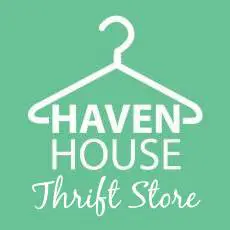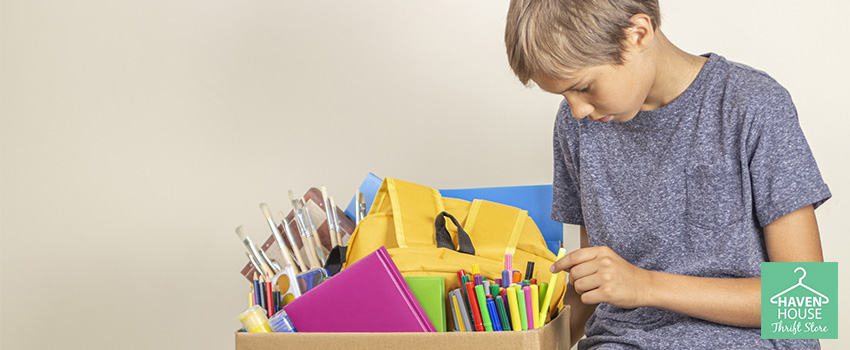It’s thrilling to imagine what you might find when shopping at thrift stores.
Most people shop at thrift shops because of the thrill of the hunt. Many thrift store shoppers are creative. They can think outside the box and find a new purpose for these warehouse loads of second-hand items. Moreover, clothing at thrift shops may not be in-season but affordable, and this is more reason to shop off-season. Additionally, those fond of thrifting at thrift stores can express and be resourceful in their style while still keeping in line with what’s trending.
Furthermore, the assortments they can find in every aisle keep them from coming back for more. In addition, the feeling that you get from discovering treasure troves of valuable, yet affordable items lingers in your mind that everything you buy is worth every penny. So, is thrift shopping bad?
Basically, there’s nothing bad about thrifting, it only becomes a problem when people become excessive thrift shoppers.
What is Excessive Thrifting?
Excessive Thrifting is defined as the over-shopping of items in the thrift store for different purposes of reselling, thrift-flipping, or simply hoarding. Although there is nothing wrong about buying, selling, or flipping your thrift shop finds because it’s the standard way of doing business. The problem is when you shop for the pleasure of hoarding or to satisfy your thrift shopping addiction.
Many people disregard tackling this issue, not because of its sensitivity but because they think it’s non-significant. On the contrary to that thinking, people should start taking these activities seriously. These acts can lead to disorders, such as impulsive and compulsive buying, that can become out of hand if ignored.
The Difference of Impulsive and Compulsive Shopping
Impulsive shopping is when a person purchases items they didn’t intend to buy. It can happen unexpectedly, often in the heat of the moment, when a thrift sale tempts you or when you find items that are unique or valuable and are too good to resist.
These impulsive purchases are sometimes relatively harmless if they fit within a person’s budget. However, impulsive spending can lead to costly shopping sprees or thrift store addiction that can cause financial havoc.
On the other hand, compulsive shopping is not like impulsive purchasing. Compulsive shopping is characterized by a compulsive need for items that are often not needed. Compulsive shopping is a compulsive need to buy items, many of which are unnecessary.
It can often lead to intense feelings of guilt, shame, and remorse afterward. Often than not, compulsive shoppers are more likely to have financial, legal, and relationship problems due to excessive spending and thrift store addiction.
Top Reasons Why People Develop Thrift Shopping Addiction
People find thrift shopping therapeutic
For some people, thrift shops are like a place of solace and tranquility. Shoppers find it therapeutic and relaxing to be in a place that welcomes you, encourages your shopping habits, changes your perspectives, and gives you a “breather” from your busy lives. It’s understandable that people, especially women, enjoy thrifting and sometimes get addicted to it because of the treasure finds they discover, the savings they incur, and the therapy they experience while shopping.
People get fond of thrift shopping because of savings
Not all thrift shoppers thrift for the same reasons. Some thrift for the love of clothes and wants to expand their wardrobes without making a significant financial investment. People thought that you could find more pieces at thrift stores for less than the amount of one brand new item. For that reason, people started to love thrifting and became addicted.
No matter what your motivations are for thrifting, the truth is that you can save money. This proves that the best way to fuel thrift shopping addiction is when items are affordable and the mentality that it would be a waste not to buy them. People in this state believe that these reasons justify their addiction.
People wouldn’t stop thrifting due to the thrill of the find
People thrift because they are looking for treasure. Thrifting can be compared to hunting, which is why they enjoy the thrill of seeking their best find.
Consequently, when they find some valuable items regularly, they get tempted to go back more frequently. They start to have the urge, thinking that they’ll get more chances of scoring the best thrift treasure.
This could be a different reason thrifting has become an addictive hobby. But, to summarize: Thrifting for treasure can be like playing a sport. You can win or lose, but ultimately it is about the enjoyment of the game and the possibility of “bringing home the gold.”
Ways to Overcome Thrift Store Addiction
1. Set a limit on your thrift shop visits.
Reduce the number of trips to thrift shops to once per week. It would help if you were observing how often you visit the thrift shop on a weekly and monthly basis. You have a lower chance of temptation to finding things to buy if you make fewer trips to thrift shops.
2. Plan your thrift shop spending.
You should save money for your thrift shopping monthly splurge. Moreover, you should be aware not to exceed this amount. To be successful in doing this, keep your thrift-shop-fund separate from your home’s budget.
3. One item to donate per item purchased.
Donate or give away one item for every item you buy. You might find that you already have enough clothes or home decors and can stop shopping for new ones.
4. Determine if your money is being saved or wasted.
We always tell ourselves the greatest lie when we are thrifting: a brand-new shirt would cost much, but we are only paying a fraction at the thrift shop. It goes in the cart, we pay for it, and then it’s brought home to be used as a decorative item in our wardrobe. It’s inexpensive, but does it add any value to your style and taste? If not, it was a waste of money.
5. Ascertain your storage space.
It would help if you didn’t have more clothes than your wardrobe can hold. Spring cleaning is the best time to get rid of excess clothes. This is an excellent way to remind yourself how much stuff you have and that you need to reduce your thrift shopping sprees.
Visit Haven House And Thrift Store And Shop The Right Way!
If you’re looking for a shopping haven to find the treasures you’ve been looking for, don’t look any further. Drop by at thrift stores in Panama City Beach, and shop responsibly in our countless aisles to discover the valuable finds that’ll make your thrifting expedition worthwhile! See you there!




